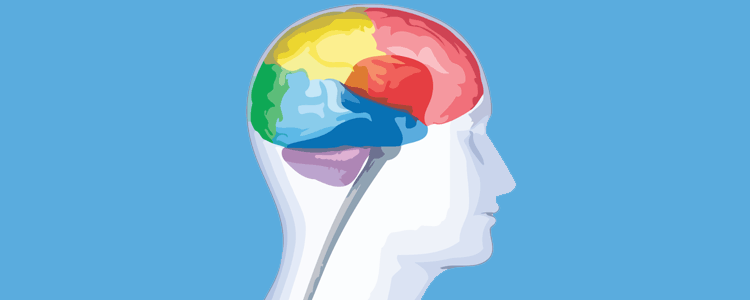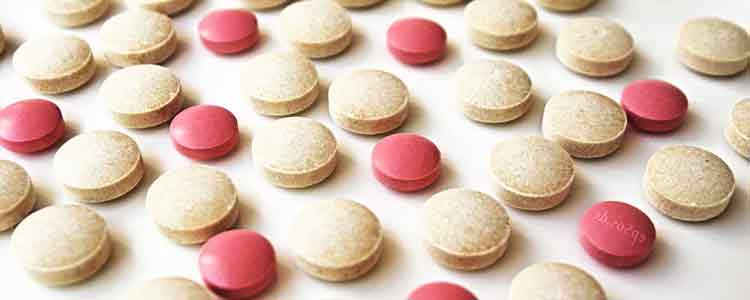
Smart pills, brain boosters, memory enhancers, brain supplements – whatever you call them, nootropics are part of a broad classification of drugs, nutraceuticals, and supplements that are touted to enhance cognitive potential through increased mental capabilities, well-being, or learning capacity. These substances come in many forms, but here we’re talking about those natural alternatives that claim to enhance mental function in healthy humans. Sound good? Read on.
What Are Nootropics?
The term nootropic was coined in the 1970s, aptly derived from the Greek words for mind and to bend or to turn. But as with most of the supplement industry, the concrete definition of what makes a drug or supplement a nootropic is still loose, to say the least. Generally, nootropics are considered cognitive boosting substances with low toxicity (or substances demonstrating a low incident of harmful side effects) that are deemed safe for long-term use. They are meant to have a small, but cumulative effect. Suffice it to say, we’re not talking about superhuman brainpower as a result of a gulp of energy drink and a pill.
The quest to enhance mental functions such as concentration or memory is no new phenomenon. As devoted readers of Natural Alternative Remedy are aware, humans have been seeking to alter and enhance physiological performance with various foods, tonics, and supplements throughout history – and at times have made life-changing discoveries in the process. Increased brainpower has long been a human objective, and today, nootropics are touted from every corner of the internet as the next big step in amplified human cognition. As such, they are becoming more and more mainstream, but we still lack a deep level of understanding about how they work.
3 Ways Nootropics Work
Much like the brain itself, nootropics are thought to work through several mechanisms, many of which are not yet fully understood. And considering the number of claimed nootropics in nature (and perhaps more importantly, on the market), it is not surprising that their methods vary. What is known are a few of the ways nootropics influence various systems and chemicals within the brain, namely through:
- Increased levels of chemicals associated with learning and memory
- Increased vasodilation of the brain
- Preservation and protection of the brain’s neurons
Chemicals Associated with Learning and Memory
The brain is home to a great variety of endogenous chemicals – or neurotransmitters – that are responsible for directing much of your everyday life as far as the brain is concerned. After traveling across a synapse to their respective receptor sites, these neurotransmitters transmit signals from one neuron in the brain to another. Before taking the risk of agitating our neuroscientist friends with too much colloquial speak, the most important concept to understand is that the brain is essentially one huge network of neurons that communicate through these neurotransmitters. Each type of neurotransmitter fills multiple roles in this chain from affecting mood to memory formation. The theory holds that increasing the concentration of certain neurotransmitters or increasing the efficacy of certain receptors increases functionality. In other words, increasing levels of neurotransmitters associated with learning and memory should result in improved desirable mental functions like concentration, mood elevation, and better memory. We see this theory at work with the success of many of the antidepressants (natural and otherwise) on the market. Among those neurotransmitters of note in the nootropics world, Acetylcholine, Dopamine, and GABA are but a few.
Vasodilation of the Brain
Boost vasodilation (widening of blood vessels) of the brain and you inherently boost blood and oxygen flow to the brain – two essentials for basic brain function. But we’re talking optimal and enhanced brain function. So let’s up the ante, shall we? Your brain consumes approximately 25% of the oxygen you take in, but only accounts for about 2% of your total body mass. That’s a big oxygen to weight ratio. Additionally, blood supplies your brain with that necessary oxygen, energy (generally in the form of glucose), and nutrients. You can likely put two and two together to come to the conclusion that the theory is that by increasing blood flow and oxygenation of the brain, you also increase mental capacity – if only in the short-term. Think about that extra boost you need just before that big presentation or exam. Increased blood circulation in the brain is also associated with alertness, better concentration, and enhanced mental stamina. Because what good is an enhanced brain if you can’t keep up?
Preservation and Protection
The wide-spread of cognitive diseases like Alzheimer’s and dementia have led to questions about environmental risk factors and possible prevention. What causes these debilitating diseases? Can they be prevented? Some nootropics are considered antioxidants with the ability to remove or regulate otherwise harmful substances in the brain. Other supplements are associated with slowing the neuron aging process, which in the world of nootropics translates to the potential to slow – or even prevent – the dissent into those cognitive diseases associated with advanced age. But the nootropic-enthusiast community takes this a step further, raising the question of the possible cognitive enhancement properties of these same supplements in healthy adults. Hey, anything’s possible, right?

Nootropic Classification by Mechanism
Though no nootropic is quite alike in form or function, nootropics can be classified by their assumed mechanism of action, which can include Stimulants, Cholinergics, Metabolics, Racetams, Serotonergics, Dopaminergics, and Adaptogens.
1. Stimulants
Perhaps one of the most widely abused and celebrated nootropic mechanism types, stimulants can function as brain enhancers by promoting increased energy levels and overall alertness. Everyone has that colleague who drags their feet into the office resembling the living dead before that first cup of coffee (and if you don’t know who we’re talking about – it just might be you). Yes, caffeine is among the stimulants applauded for its natural nootropic effects, but there is debate about whether stimulants truly fall into the nootropic category. With a loose and unregulated definition, there are bound to be some disagreements. Further to the extreme are amphetamine drugs like Adderall. Stimulants can assist in focus, drive, and basic mental processes like information processing, but are short-lived and carry side effects, not to mention the risk of addiction or burnout.
2. Cholinergics
Supplements that increase the level of acetylcholine (remember that neurotransmitter?) in the brain are considered cholinergics. Cholinergics work because acetylcholine is one of the main neurotransmitters responsible for assisting in retaining new information, controlling attention span, and accessing memory. Increase levels of acetylcholine and increase the rate at which these types of connections are constructed, or so the theory goes. These cholinergics are also recognized to increase acetylcholine levels specifically in the hippocampus, which if you were paying attention in high school anatomy, you would know is associated with long-term memory formation and storage. Humans produce acetylcholine by combining acetate with the choline found in our diet, meaning naturally increasing your intake of choline might just increase your levels of this all-important neurotransmitter.
3. Metabolics
Metabolics consist of any supplement that optimizes the supply of energy to your brain cells. How does one optimize energy to brain cells? Through vasodilation, of course! Increased blood flow equals increased oxygenation, nutrient introduction, and energy supply. To top it off, with some teamwork, together oxygen and glucose make ATP, your neurons’ favorite type of energy. Other metabolic supplements encourage better nutrient absorption by your cells, which might just boost that brainpower a little more.
4. Racetams
Similarly to cholinergics, racetams rely on that good old acetylcholine to boost your brain, but they do so in a different way. Rather than raising levels of acetylcholine in your brain, racetams instead increase the sensitivity (read: efficiency) of the acetylcholine receptors. While this mechanism results in multiple effects, the main outcome is an increase in cholinergic activity in the brain – a coup for increased cognition. Other racetams increase the density of these important receptors in strategic areas of the brain like the hippocampus. Even others supposedly promote the development of new neurons. And who doesn’t want more neurons?
5. Serotonergics
That’s enough about acetylcholine. Let’s move on to serotonin. This special little neurotransmitter is responsible for controlling a number of processes including, but not limited to: sleep patterns, mood regulation, and even appetite. You’ve likely heard of serotonin in reference to depression and insomnia, which is no surprise when one looks closely at its primary duties in the brain. By boosting serotonin levels, you’ll likely elevate mood, a precursor to enhanced cognitive function.
6. Dopaminergics
Moving on to dopaminergics, we must first look at dopamine. Dopamine is a vital piece of our brain’s rewards system, responsible for causing pleasure and happiness with the right external stimulator (think winning a competition, eating chocolate, or having an orgasm). Dopamine is also associated with muscular control and movement. It’s a bit of an overachiever if you ask us. With increased levels of dopamine generally come reduced anxiety, stress, and depression. But dopamine doesn’t just fight the bad, it also encourages the good like confidence and motivation. Increasing dopamine in strategic areas of the brain, say the pre-frontal cortex, can lead to enhanced alertness and energy levels making it one happy and determined nootropic.
7. Adaptogens
Perhaps the least understood, but most handy, adaptogens support overall maintenance and proper balance of your brain cells. Sounds like a good thing, right? Indeed. Adaptogens can decrease vulnerability to the stressors that can interfere with regular cellular maintenance efforts. The longer you wait to call the handyman, the worse the issue gets. Same goes for your internal systems. Adaptogens can help keep things on track.
Nootropic Stacks
It may sound like a street term, but for nootropic-enthusiasts, stacks are the best option to reap the benefits of multiple nootropic mechanisms. A “stack” refers to combining two or more known nootropics into a personal regimen. The idea behind stacks is to combine the mechanisms and types of different nootropics to derive even greater brain benefit. Recommended stacks can be found and purchased together, but for die-hard nootropics consumers, the fact that stacks are also highly customizable and allow the user to play scientific researcher on a study of one is far too appealing to overlook. Nootropics users tend to stack nootropics that are known to complement one another, but more importantly those that work with their own chemistry and desired results.

Natural Nootropics List
Many prefer to explore the all-natural alternatives when it comes to trying nootropics. In fact, that’s our hope here at Natural Alternative Remedy. Thankfully, nature has provided us with some great substances to boost our brain power – naturally:
- Ashwaganda
- Bacopa Monnieri
- Choline
- Creatine
- DHA (omega-3 fatty acid)
- Ginkgo Biloba
- Ginseng
- Gotu Kola
- Huperzine-A
- Kava Kava
- Lion’s Mane (mushroom)
- L-Theanine and Caffeine
- L-Tryptophan
- Passion Flower
- Polygala
- St. John’s Wort
- Valorcine
- Vinpocetine
As this list continues to grow, check back for more information on natural nootropics.
